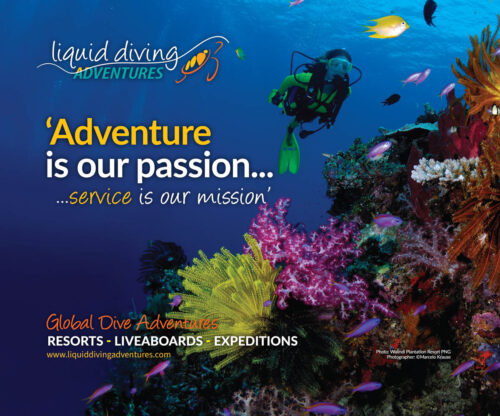The largest known specimen of giant clam was over four and a half feet (1.3 m) wide and weighed approximately 550 pounds (250 kg). The large majority of a giant clam’s mass is in its shell, with the soft parts accounting for only approximately 10% of the weight. Like most corals, some anemones, and other reef organisms, giant clams utilize a combination of methods to obtain food. The majority of their energy is derived from symbiotic algae living within their cells, providing the clams with excess energy that they make via photosynthesis (the use of sunlight to convert carbon dioxide into food/energy). In return, the algae have a safe place to live and receive the nutrients necessary to photosynthesize. The giant clams provides those nutrients by filter feeding small prey from the water above the reef surface, which it siphons through its body. The beautiful, bright colors characteristic of individual giant clams are actually a result of the symbiotic algae.
Giant clams reproduce via external fertilization, where eggs and sperm are released into the water column at the same time. However, giant clams are cemented to the reef surface, so they are only able to reproduce with other individuals that are close by. Therefore, individuals of this species are simultaneous hermaphrodites. They produce both eggs and sperm. They are not able to self-fertilize (i.e., an individual’s sperm cannot fertilize its own eggs), but this life history strategy ensures that nearby individuals can always reproduce with each other.
Though the soft body only accounts for about 10% of the body weight of giant clams, it is nearly pure, healthy protein, and this species has been hunted for at least several centuries. Unfortunately, this hunting has put the species at risk, and conservationists now consider it to be vulnerable to extinction. Recent large-scale aquaculture operations have reduced the pressure on wild populations while allowing for continued human use of this vital protein source (particularly on remote islands in the Pacific and Indian oceans). This species is also a favorite in public and private aquaria. Most individuals currently on display were likely raised in captivity rather than collected from the wild.
Engage Youth With Sailors for the Sea
Oceana joined forces with Sailors for the Sea, an ocean conservation organization dedicated to educating and engaging the world’s boating community. Sailors for the Sea developed the KELP (Kids Environmental Lesson Plans) program to create the next generation of ocean stewards. Click here or below to download hands-on marine science activities for kids.





